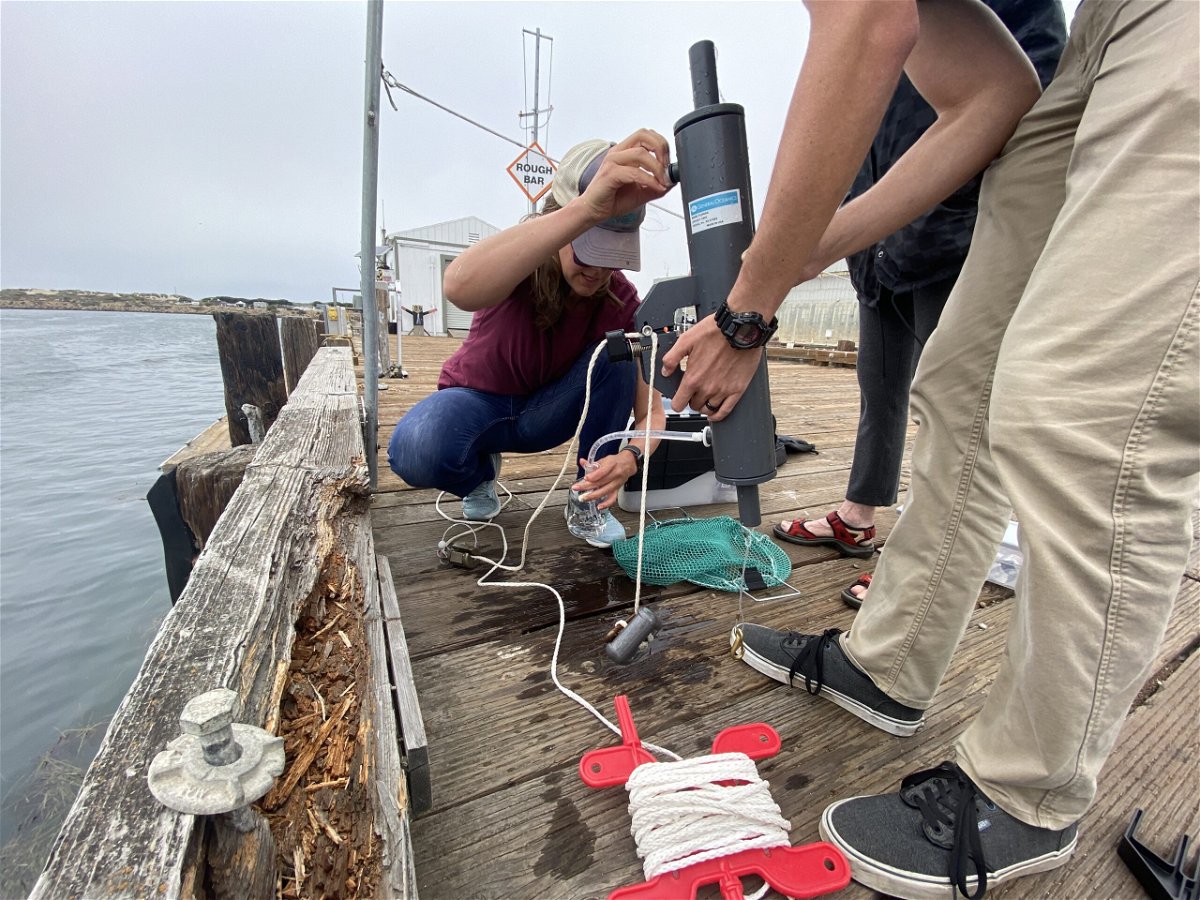Federal funds upgrade Morro Bay monitoring sensors and improve research opportunities

MORRO BAY, Calif. – The Morro Bay National Estuary Program, a non-profit dedicated to protecting and restoring Morro Bay, received just over $900,000 annually for the next five years through the federal Bipartisan Infrastructure Law.
The non-profit is already using those funds to support restoration, monitoring, and education projects that benefit Morro Bay's human residents and visitors as well as the flora and fauna above and below the surface of the unique bay.
One of those projects involves a partnership with Cal Poly researchers to study water quality in the bay.
The Estuary Program used those federal funds to purchase sensors that continuously track water quality conditions at both the mouth of the bay and the back bay near the oyster farms. Cal Poly researchers installed and maintain those sensors and the resulting data is crucial to their research efforts.
“This partnership is a natural fit for the Estuary Program. It makes sense for us to work closely with local
university researchers focused on the bay and provide resources that can help move their work
forward,” said Estuary Program Executive Director Melodie Grubbs.
Those Cal Poly partners in the Estuary Project are Dr. Ryan Walter, a physical oceanographer and Associate Professor of Physics, and Dr. Emily Bockman, a chemical oceanographer and Associate Professor of Chemistry.
Both of those faculty members have partnered with the project for several years to study the physical and chemical variability in the bay, including impacts from eelgrass decline and recovery.
Eelgrass is a seagrass that grows naturally in Morro Bay and experienced a rapid decline worldwide, including a 90% decline in Morro Bay. Researchers seek to understand the conditions that support eelgrass recovery and the impact the seagrass has on water quality in the bay.
The sensors are part of the Central and Northern California Ocean Observing System, a network of coordinated partners that collect environmental data to support scientific research and resource management.
Until the opportunity came through the Bipartisan Infrastructure Law, the sensors being used were the original ones from 2007 and the degradation of the equipment over time resulted in periodic downtimes detail the Estuary Program.
“These new and improved sensors will allow for a unique long-term view into how the estuarine environment is changing,” said Dr. Walter. “These sensors serve as a foundation for understanding
water quality conditions in the bay and either directly or indirectly have helped with understanding bay
oxygen conditions, ocean acidification, marine heat waves, bacteria concentrations, harmful algal blooms, eelgrass system dynamics, and local aquaculture health.”

“The main goal of my research is to characterize the short and long-term variability of pH and carbonate
chemistry in the bay and to learn what drives that variability,” said Dr. Bockmon. “If we know what is
causing particular conditions, then we can work with stakeholders to avoid them or mitigate their
impacts. Without these sensors and the support of the Estuary Program, we would be significantly
hampered in our efforts to understand the estuary’s chemical environment given how variable it is on
tidal, daily, and weekly timescales.”
The data collected by the upgraded sensors supports Cal Poly's 'Learn By Doing' approach and is publicly available via the Central and Northern California Ocean Observing System here.
Additional Estuary Programs supported by funding through the Bipartisan Infrastructure Law include a partnership with the Los Osos Community Services District to install a groundwater monitoring well, a project with the U.S. Geologic Survey to model sea level rise and its impact on bay habitats, and training sessions to share environmental education curriculum with educators in the local area and further afield.
